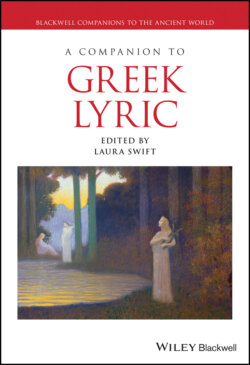Читать книгу A Companion to Greek Lyric - Группа авторов - Страница 77
Palaeography
ОглавлениеA familiarity with ancient handwriting styles (and their evolution) is essential for the papyrologist: due to abrasion, dirt, holes, or other damage, letters can be quite unclear and educated guesswork is therefore inevitable. In order to produce good readings, it is often necessary to produce an alphabet of letter shapes drawn by a particular scribe, the recourse to which helps to narrow the possibilities for fragmentary letters.
Palaeography is also important for assigning a date to the text. Although this is true of both documentary and literary texts, documents can helpfully include a dating formula while literary texts lack such an internal indication (unless the papyrus has a document on its obverse side!). The differences between the two kinds of text are often obvious even to an untrained eye; unlike the cursive scripts of rapid documentary hands, whose analysis often requires specialized training, those of professionally produced ancient books can be remarkably elegant (Figures 7.4 and 7.5). Their features have been analyzed and categorized in several scholarly studies: in some cases, the handiwork of an individual scribe can even be identified (e.g., Johnson 2004: 16–37). But not all literary texts are the product of professional workshops: the text of PSI 13.1300, the so-called Sappho ostracon (= fr. 2), for example, is very corrupt, and the hand that transcribed it, while practiced, is less regular than that of a formal bookroll (Figure 7.6). This poem, coincidentally, continues to challenge its editors and interpreters.
Figure 7.4 P.Tebt. 2.684 (= Pindar, Ol. 9 and 10). The clear script is an example of biblical majuscule. (Courtesy of the Center for the Tebtunis Papyri, University of California, Berkeley.)
Figure 7.5 P.Tebt. 2.620 descr., a receipt for poll-tax. The rapid script is an example of a documentary cursive. (Courtesy of the Center for the Tebtunis Papyri, University of California, Berkeley.)
Figure 7.6 PSI 13.1300 (= Sappho fr. 2) (Florence, Biblioteca Medicea Laurenziana, inv. 22008. Su concessione del Ministero per i Beni e le Attività Culturali.)
